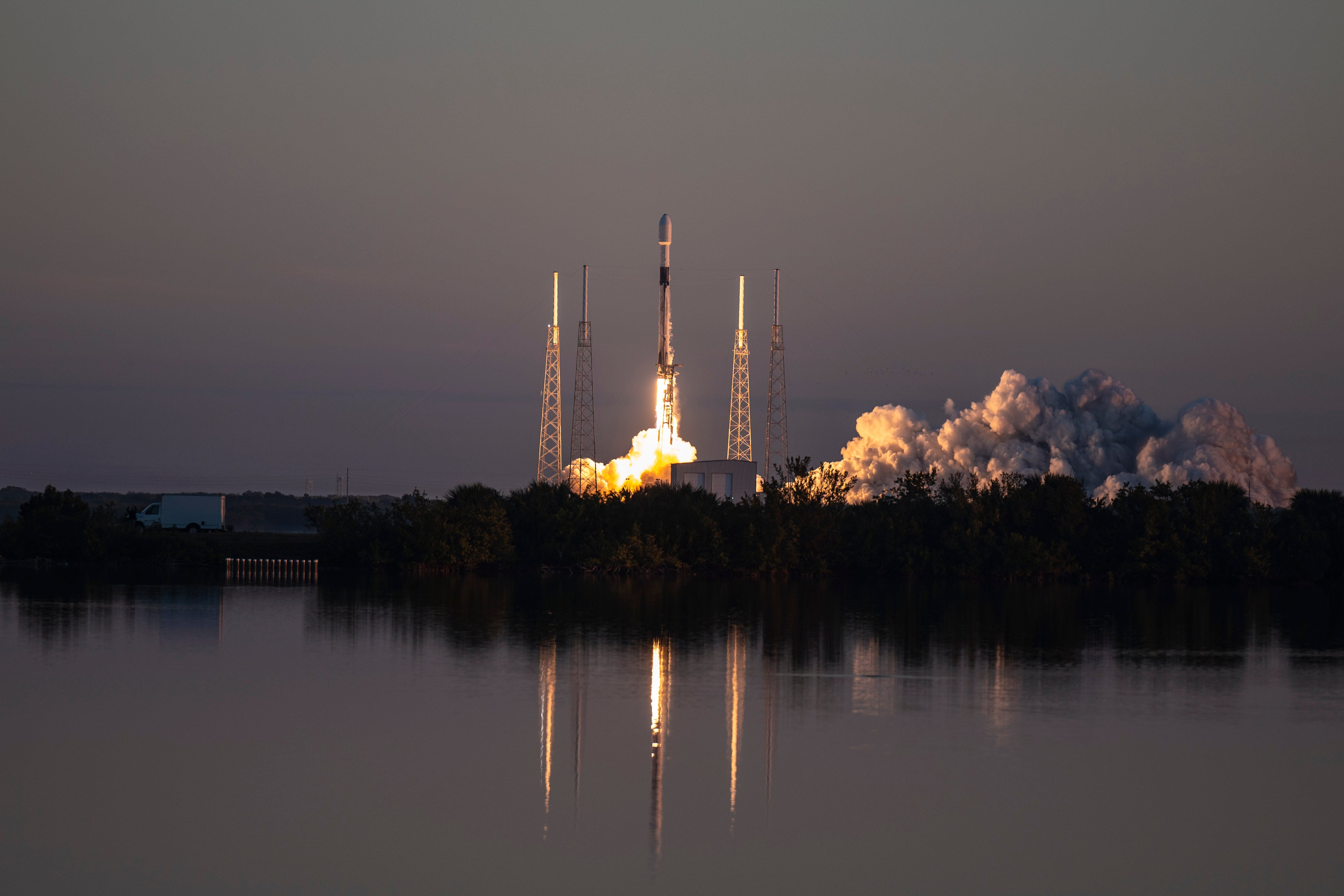The Space Force wants to transition the first of its space domain awareness satellite programs to a new cloud-based ground system as soon as next spring — and rather than work with a traditional defense contractor, it’s formed a consortium of small, commercial firms to help it modernize satellite operations.
The Space Rapid Capabilities Office in September awarded initial contracts to 20 small businesses who will compete for $1 billion worth of task orders over the next five to seven years.
The companies span a range of expertise. Aalyria, a spinoff from Google parent company Alphabet, develops software to help organizations manage satellite networks and builds laser communication terminals. A Colorado-based firm, Infinity, specializes in systems engineering. Omni Federal, based in Washington, D.C., develops cloud and cyber solutions.
Col. Greg Hoffman, who leads the Rapid Resilient Command and Control program, or R2C2, said being able to take advantage of the breadth of experience and specialization represented across those firms is important for a program that aims to build a more resilient, capable ground operations system.
“We honed in on this small business approach because they’ve got the right experts to team with us to deliver this satellite operations software that we need for dynamic space operations,” he told Defense News. “There’s so much talent that we’re able to tap into across these 20 companies.”
R2C2 builds on two previous Space Force ground programs: the Space RCO’s Ground Command, Control and Communications program; and Space Systems Command’s Enterprise Ground Services, or EGS, program. EGS in particular sought to bring together the Space Force’s many command and control systems, but its scope was too broad and its requirements too complex.
The service last year opted to narrow its focus in order to deliver the capability more quickly. The program is now focused on developing a system that can operate highly maneuverable satellites — a mission the service calls dynamic space operations.
The Defense Department has traditionally struggled to field ground systems on time, often launching satellites years before their operation segments are ready. Space Force acquisition executive Frank Calvelli has challenged the acquisition community to change that paradigm and field working ground systems ahead of the satellites they’ll operate.
Hoffman said Calvelli’s directive is top of mind for the Space RCO. The program’s use of commercial vendors and focus on Space Command’s real-time operational needs make it different from legacy acquisition approaches, he said.
R2C2 is structured to release new capabilities on a regular cadence — weekly and sometimes monthly, Hoffman said. Startups and small firms are created around a rapid delivery mentality and tend to be unburdened by large overhead and corporate processes. That mindset aligns well with the Space RCO, he added.
“What we want to do is really focus on delivering the software . . . and get it into the hands of testers and operators for that feedback,” Hoffman said. “Being able to work with the developers and the testers and operators is really critical to delivering this sort of nascent capability and doing it on the timelines that our senior leaders expect.”
Early milestones
The program has already logged several successes since it took shape in the summer of 2023. The Space RCO was able to use some existing agreements with small vendors to develop a prototype, which means it didn’t have to wait to get started. That work helped the team prepare its technical approach and its strategy for working with a cohort of commercial companies rather than a larger prime contractor.
Within the first three months, R2C2 received authority to operate for its commercial cloud capability — a process to validate a program’s cyber approach that often takes two or more years to complete. That early approval allowed the team to start pushing software code quickly, Hoffman said.
The program also demonstrated the ability to load its satellite operations suite into the commercial cloud environment, which it used to simulate operations and then establish a limited connection with a satellite in orbit. That work culminated in August when the program used its prototype to send 11 commands to the satellite, which the spacecraft acknowledged.
Now, with its R2C2 vendors on contract, the Space RCO is working to acclimate them to the program’s requirements — and the DOD environment — so they’re ready to compete for future work. Hoffman said he expects to start issuing delivery orders this fall and winter with the goal of providing multiple opportunities for competition each year.
Over the next year, the focus will be on scaling the capabilities the team has already developed so that R2C2 can start to integrate satellites in the spring time frame. Hoffman wouldn’t identify which satellite programs would be first in line, but noted that they are existing systems that fall within the dynamic space operations mission.
Eventually, the program’s focus will shift to partnering with new programs and ensuring that its schedules are aligned so the satellites can integrate as soon as they’re ready.
“We’re going to line up with their timing,” Hoffman said. “When they need a ground system, we’re going to be ready for all their ground test campaign and pre-launch readiness activities and then for their on-orbit operations.”
Courtney Albon is C4ISRNET’s space and emerging technology reporter. She has covered the U.S. military since 2012, with a focus on the Air Force and Space Force. She has reported on some of the Defense Department’s most significant acquisition, budget and policy challenges.



